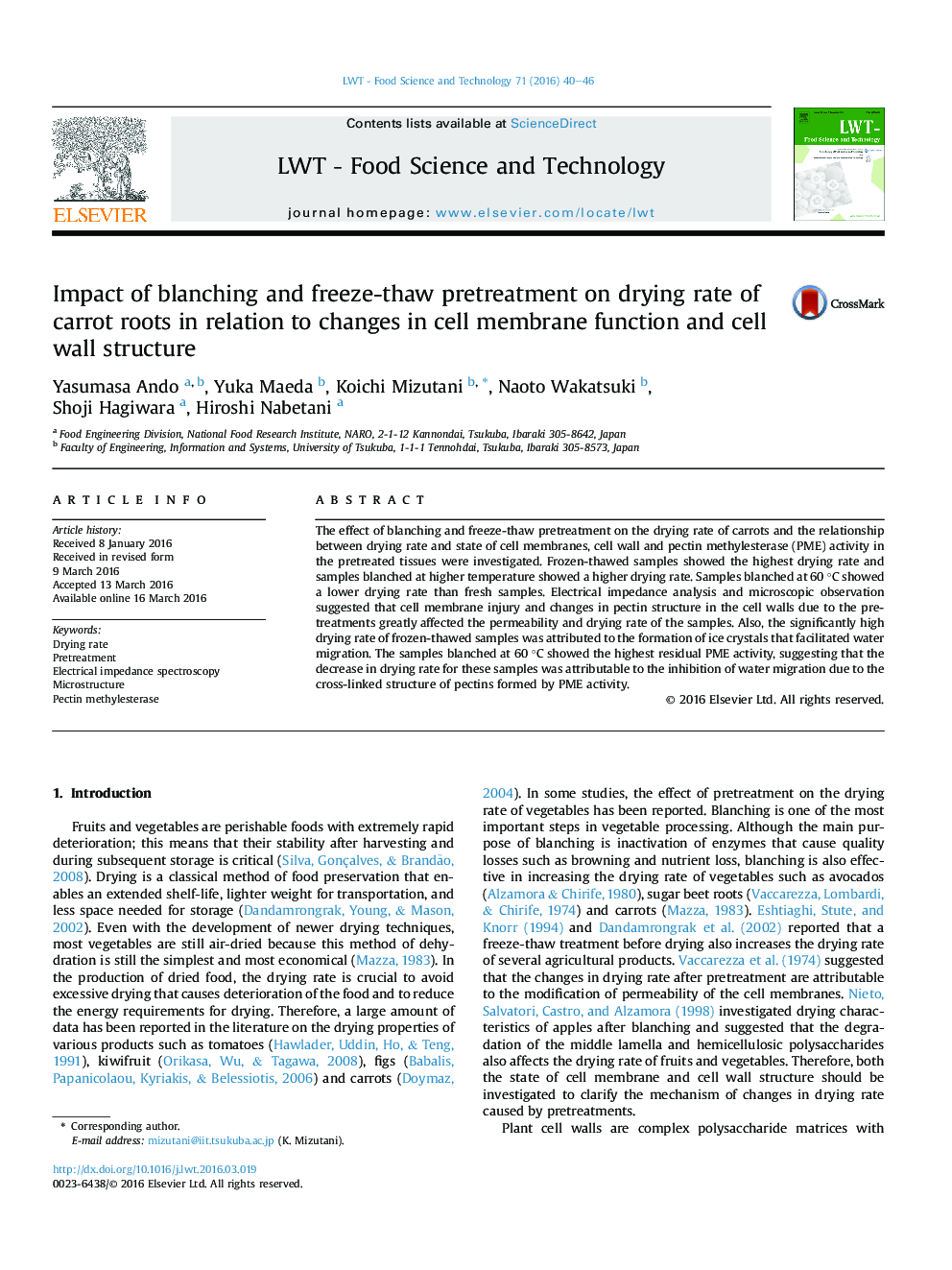| کد مقاله | کد نشریه | سال انتشار | مقاله انگلیسی | نسخه تمام متن |
|---|---|---|---|---|
| 4563508 | 1628526 | 2016 | 7 صفحه PDF | دانلود رایگان |
• The drying rates of fresh, blanched and frozen-thawed carrots were evaluated.
• The frozen-thawed samples damaged by ice crystals had the highest drying rate.
• Samples blanched at higher temperature showed a higher drying rate.
• Electrical impedance characteristics and cell wall dissociation were evaluated.
• The states of cell membranes and cell wall structure affect the drying rate.
The effect of blanching and freeze-thaw pretreatment on the drying rate of carrots and the relationship between drying rate and state of cell membranes, cell wall and pectin methylesterase (PME) activity in the pretreated tissues were investigated. Frozen-thawed samples showed the highest drying rate and samples blanched at higher temperature showed a higher drying rate. Samples blanched at 60 °C showed a lower drying rate than fresh samples. Electrical impedance analysis and microscopic observation suggested that cell membrane injury and changes in pectin structure in the cell walls due to the pretreatments greatly affected the permeability and drying rate of the samples. Also, the significantly high drying rate of frozen-thawed samples was attributed to the formation of ice crystals that facilitated water migration. The samples blanched at 60 °C showed the highest residual PME activity, suggesting that the decrease in drying rate for these samples was attributable to the inhibition of water migration due to the cross-linked structure of pectins formed by PME activity.
Journal: LWT - Food Science and Technology - Volume 71, September 2016, Pages 40–46
